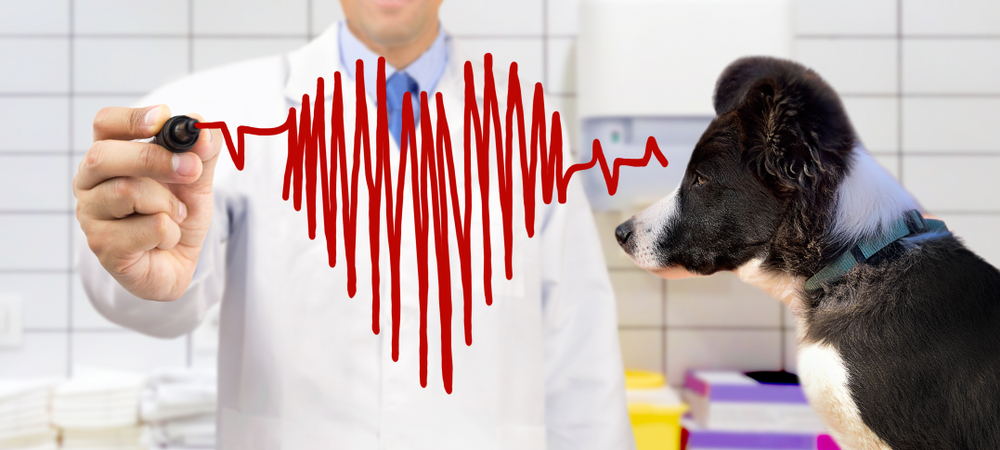Benefits of Early Diagnosis With a Board Certified Veterinary Cardiologist}
Wiki Article
The Duty of Ultrasound and CT Scan in Modern Veterinary Practices: Insights From Experienced Professionals
In modern veterinary practices, ultrasound and CT scans significantly improve analysis capacities. These imaging strategies provide vital insights right into animal wellness, leading treatment choices. Experienced experts acknowledge the unique benefits of each method. Ultrasound offers real-time evaluations, while CT checks provide intricate anatomical details. Comprehending their roles and applications elevates crucial inquiries about their impact on person outcomes and the future of vet diagnostics. What understandings can be gotten from their integrated usage?Understanding Ultrasound in Vet Medication
Ultrasound is a crucial diagnostic device in veterinary medication, offering a non-invasive technique to envision internal frameworks. This imaging technique employs high-frequency acoustic waves to develop real-time photos of body organs and cells, permitting vets to examine conditions without medical treatment. Usual applications include evaluating the heart, liver, kidneys, and reproductive organs, in addition to checking pregnancies.The procedure is fairly quick and can be executed in different settings, making it an available alternative for veterinarians. Unlike radiography, ultrasound offers in-depth info concerning soft tissues and blood flow, which is important for exact diagnoses.Veterinary experts depend on ultrasound to discover problems such as tumors, cysts, and fluid build-up. Its capability to assist biopsies and various other treatments further enhances its utility in medical technique. By using a effective and risk-free means to examine interior composition, ultrasound has actually become a foundation of modern vet diagnostics.
The Advantages of CT Scans for Pet Diagnostics
CT scans offer significant benefits in veterinary diagnostics by offering boosted accuracy in determining interior problems (Cancer Veterinary Near Me). As a non-invasive imaging method, they assure the security and convenience of animals during evaluations. Furthermore, CT checks facilitate a comprehensive assessment of internal frameworks, permitting for more efficient therapy planningImproved Analysis Accuracy
Innovations in imaging technology have considerably enhanced diagnostic accuracy in veterinary medication, especially through making use of CT scans. These scans supply detailed cross-sectional pictures of a pet's interior structures, enabling veterinarians to identify irregularities with accuracy. The high resolution and three-dimensional capacities of CT imaging facilitate the detection of problems such as lumps, fractures, and internal blood loss that could be missed with standard imaging methods. Furthermore, CT scans can assist in pre-surgical preparation by offering a comprehensive sight of anatomical connections. This level of information not just improves the accuracy of medical diagnoses however likewise help in tailoring reliable therapy strategies. Consequently, the integration of CT innovation right into vet techniques is transforming the landscape of animal healthcare, boosting results for individuals.Non-Invasive Imaging Strategy
The introduction of non-invasive imaging methods has changed animal diagnostics, with CT checks becoming a popular device in veterinary methods. These scans offer high-resolution, cross-sectional photos of an animal's interior structures, permitting veterinarians to examine intricate problems without the need for intrusive procedures. The advantages of CT scans include their capacity to discover lumps, fractures, and interior bleeding with impressive precision. Furthermore, they promote the evaluation of soft cells and body organs, enhancing diagnostic abilities. The rate of CT scanning enables quick decision-making, which is essential in emergency circumstances. By decreasing stress and discomfort for the pet, CT scans add to an extra humane method to diagnostics, inevitably improving therapy outcomes and progressing veterinary care.Comprehensive Internal Assessment
A detailed internal assessment is necessary for exact medical diagnosis and effective therapy in veterinary medicine. CT checks deal substantial benefits hereof, supplying thorough cross-sectional pictures of a pet's internal structures. This advanced imaging modality enhances visualization of complex physiological regions, enabling vets to recognize abnormalities such as growths, cracks, and inner blood loss with greater accuracy. On top of that, CT checks help with the evaluation of problems that might be challenging to identify through traditional methods. The speed and precision of CT imaging additionally add to timely interventions, improving patient outcomes. As vet methods progressively incorporate CT technology, the benefits of comprehensive inner evaluations come to be apparent, enhancing the importance of this tool in contemporary veterinary diagnostics.Comparing Ultrasound and CT Imaging Techniques
While both ultrasound and CT imaging offer necessary duties in vet diagnostics, each strategy uses unique benefits and restrictions that can influence clinical decision-making. Ultrasound is especially valued for its real-time imaging capacities, permitting veterinarians to observe dynamic physical processes. This technique is non-invasive, mobile, and does not entail ionizing radiation, making it a much safer option for both medical professionals and animals. Ultrasound may have restrictions in visualizing certain physiological structures or deep tissues.Conversely, CT imaging provides in-depth cross-sectional views of the body, allowing for specific localization of irregularities. It excels in reviewing complicated body organs and frameworks, especially in the thorax and abdominal area. Nevertheless, CT scans call for sedation or anesthetic in a lot of cases and include direct exposure to ionizing radiation. Ultimately, the choice in between ultrasound and CT depends upon the specific medical circumstance, the area of interest, and the seriousness of the diagnostic demands.Situation Researches: Effective Medical Diagnoses Through Imaging
Situation researches illustrate the significant enhancements in analysis precision attained via innovative imaging technologies like ultrasound and CT scans in veterinary practices. These advancements not only enhance the detection of different conditions however likewise assist in reliable and prompt therapy strategies. Assessing details cases can highlight the transformative impact of these imaging techniques on veterinary medicine.Analysis Precision Improvements

Imaging Technology Advancements
As veterinary imaging innovation remains to evolve, its influence on diagnostic capacities comes to be increasingly apparent. Current instance studies highlight the effective application of innovative ultrasound and CT check strategies in identifying complex conditions. A vet facility made use of high-resolution CT scans to identify an unusual form of lung cancer cells in a pet, which traditional imaging had missed out on. Likewise, an ultrasound exam exposed an abdominal mass in a feline, triggering timely medical treatment and a positive end result. These innovations not just boost analysis accuracy but also allow vets to devise targeted therapy plans. By leveraging advanced imaging technologies, vet experts are considerably enhancing patient care, causing a lot more effective monitoring of different wellness conditions in pets.
The Role of Imaging in Emergency Vet Care
Imaging plays an essential function in emergency situation veterinary care, supplying vets with crucial info needed to make quick, educated choices. In urgent circumstances, strategies like ultrasound and CT scans enable professionals to quickly examine a pet dog's internal frameworks, recognizing crucial problems such as inner blood loss, fractures, or organ irregularities. These imaging methods allow for real-time examinations, promoting timely interventions that can be life-saving. As an example, ultrasound is very useful for evaluating soft tissue injuries and conditions like liquid build-up, while CT checks deal thorough pictures of intricate physiological frameworks, essential for diagnosing trauma situations. The rate and precision of these imaging strategies enhance the veterinarian's capacity to design reliable treatment plans, guaranteeing the finest possible results for their people. The combination of advanced imaging innovations into emergency situation vet practices is not only advantageous but significantly needed, as it boosts analysis capabilities and boosts general animal care during crucial minutes.
Training and Knowledge in Veterinary Imaging
Sophisticated imaging strategies such as ultrasound and CT scans are essential for reliable veterinary treatment, the effective execution of these technologies heavily depends on the training and expertise of veterinary specialists. Efficient use imaging tools needs detailed understanding of composition, pathology, and the principles underlying each technique. Vet specialists must undergo specific training to precisely analyze imaging outcomes, which is essential for diagnosing conditions and planning treatment.Certifications and continuing education in veterinary imaging enhance the skills of specialists, enabling them to stay updated with technological developments. Partnership in between vets and radiologists usually results in enhanced diagnostic accuracy, as specialists can offer insights right into intricate cases. In enhancement, sensible experience in taking care of imaging devices fosters self-confidence in its application. Eventually, the high quality of veterinary imaging services is directly associated to the degree of training and expertise had by the specialists making use of these necessary analysis tools.Future Trends in Diagnostic Imaging for Animals
With the rapid advancements in technology, vet analysis imaging is positioned for significant evolution in the coming years. Arising trends indicate a change in the direction of more obtainable and mobile imaging modalities, such as handheld ultrasound tools, which can enhance area diagnostics. Additionally, the assimilation of expert system is expected to reinvent picture analysis, permitting for quicker and much more accurate interpretations of results.Moreover, developments in 3D imaging techniques and calculated tomography will certainly supply vets with more detailed sights of animal makeup, resulting in improved therapy strategies. Virtual truth technology might also contribute in surgical preparation and education, offering have a peek at this website veterinarians a special point of view on intricate cases.As telemedicine continues to expand, remote assessments promoted by analysis imaging will end up being a lot more typical, allowing professionals to assist family doctors in real-time. Generally, these fads are set to improve the performance and efficiency of vet treatment, inevitably improving animal end results.Frequently Asked Questions
Just How Much Do Ultrasound and CT Checks Cost in Veterinary Centers?
The prices of ultrasound and CT scans in vet clinics usually vary from $300 to $1,500, relying on factors such as place, clinic type, and specific procedures required for the animal's medical diagnosis and therapy.
Exist Any Type Of Risks Connected With Ultrasound and CT Checks for Family Pets?
Ultrasound and CT scans typically pose marginal dangers to pets. Nonetheless, prospective issues consist of sedation responses and exposure to anesthetics. Board Certified Veterinary Cardiologist. Vets thoroughly examine each case to minimize any threats related to visite site these analysis proceduresThe Length Of Time Do Ultrasound and CT Treatments Generally Take?
Ultrasound treatments typically take around thirty minutes to an hour, relying on the complexity. CT scans, being even more comprehensive, usually need half an hour to 90 minutes, consisting of preparation and recuperation time for the animal.Can All Veterinarians Perform Ultrasounds and CT Scans?
Not all vets can execute ultrasounds and CT scans. Specialized training and certification are usually required to ensure expertise in these sophisticated imaging strategies, which may limit their accessibility to vets with additional credentials and resources.What Sorts Of Pets Benefit A Lot Of From These Imaging Techniques?
Specific pet varieties, specifically canines and felines, advantage greatly from ultrasound and CT scans. These imaging methods improve analysis precision for problems like tumors, interior injuries, and body organ problems, leading to better treatment end results and person treatment. The high resolution and three-dimensional capabilities of CT imaging facilitate the discovery of conditions such as tumors, fractures, and inner bleeding that might be missed with standard imaging approaches. Case research studies highlight the substantial renovations in analysis precision attained through advanced imaging technologies like ultrasound and CT scans in veterinary methods. Improving diagnostic accuracy in veterinary methods has actually been substantially helped by improvements in imaging modern technologies such as ultrasound and CT scans. Innovative imaging techniques such as ultrasound and CT scans are essential for effective vet treatment, the successful implementation of these technologies greatly depends on the training and proficiency of veterinary professionals. Vet specialists should go through specialized training to accurately interpret imaging results, which is vital for diagnosing conditions and planning treatment.Certifications and proceeding education and learning in vet imaging improve the skills of specialists, enabling them to stay upgraded with technical improvements.Report this wiki page